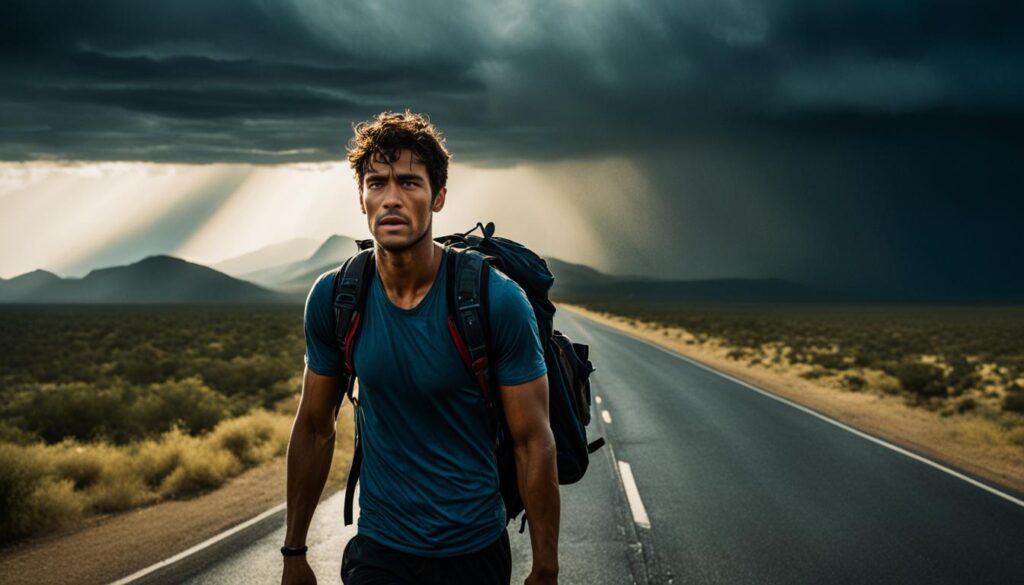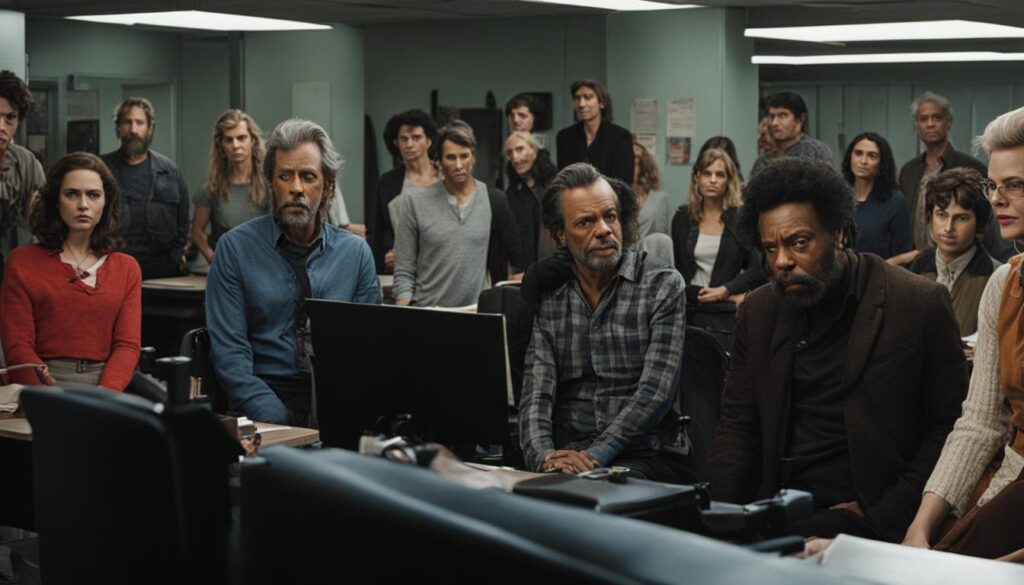Welcome to our long-form article that examines the chilling adaptation of Stephen King’s iconic novel, “The Long Walk.” As one of King’s most harrowing tales, the novel immerses readers in a dystopian world where young men must fight to the death in a deadly competition. The upcoming movie adaptation captures the suspense and horror of the novel, bringing the story to life on the silver screen. In this article, we will provide an in-depth analysis of the long-awaited long walk movie Stephen King fans have been waiting for. Let’s dive in!
Stephen King’s Works: A Legacy of Horror and Suspense
Stephen King is a household name, revered for his terrifying tales that have left readers and viewers alike quaking in their boots for decades. With over 60 novels and countless other works, King is known for his unmatched ability to delve into the darkest corners of the human psyche, leaving his audience breathless with anticipation at every turn.
His works span a range of sub-genres within horror, including supernatural, psychological, and sci-fi horror, and are characterized by their ability to create a sense of palpable tension and unease in the reader or viewer. Through his skilled use of character development and world-building, King is able to deliver stories that are not only terrifying but also emotionally resonant.
But King’s influence extends far beyond the realm of horror. His works have been adapted into countless films, TV shows, and even comic books, and his reputation as a master storyteller has cemented his place in literary history. Whether it’s the bone-chilling “The Shining,” the heart-stopping “Misery,” or the harrowing “Pet Sematary,” Stephen King’s impact on the genre of horror and suspense is undeniable.
In conclusion, Stephen King’s works have left an indelible mark on the literary and cinematic worlds, shaping the horror and suspense genres in ways that continue to resonate with audiences today.
The Long Walk: A Synopsis of the Chilling Novel
Stephen King’s “The Long Walk” is a powerful novel that centers around a grueling competition where teenage boys must walk until only one of them remains. The story is set in a dystopian world, where every aspect of life is controlled by a totalitarian government.
The book follows the protagonist, Raymond Davis Garraty, and a group of other young boys as they walk from Maine to the Canadian border. Along the way, they face terrible obstacles and witness the death of their fellow contestants, including some of Garraty’s closest friends.
The novel explores themes of loyalty, perseverance, and the effects of power on human behavior. King’s vivid descriptions of the grueling competition and the boys’ mental and physical states are both haunting and memorable.

From Page to Screen: The Journey of Adaptation
Adapting a beloved book to a movie is a process fraught with challenges and decisions. Bringing Stephen King’s “The Long Walk” to the silver screen was no exception. The filmmakers had to navigate the task of staying true to the novel’s unsettling themes while making it accessible to a wide audience.
One crucial aspect of the adaptation process was deciding what to include and what to leave out. The novel is a dense, character-driven story that unfolds over a long period, while the movie must fit within a specific time frame. The adaptation streamlined the story and focused on the essential plot points while retaining the core of the novel.
The filmmakers also had to consider the impact of visuals and sound in creating the eerie atmosphere that is so crucial to the story. They experimented with different lighting, camera angles, and sound effects to capture the anxiety and terror of the characters on screen.
The adaptation of “The Long Walk” was a rigorous process that required making difficult decisions every step of the way. The result was a movie that stayed true to Stephen King’s vision while creating a uniquely terrifying experience for moviegoers.
Casting and Characters: Bringing King’s Creations to Life
Stephen King’s “The Long Walk” is a story that thrives on its characters. Adapting the book to a movie required careful casting choices to bring those memorable characters to life, and the filmmakers delivered.
The lead role of Ray Garraty was played superbly by Dylan O’Brien, whose performance captured the character’s determination and inner turmoil. Michael Sheen, known for his versatile acting skills, brought the ruthless and sadistic character of the Major to the screen with terrifying ease.
Other standout performances include Eliza Scanlen as Jan, Jacob Latimore as Peter McVries, and Harrison Gilbertson as Art Baker. Each actor added their unique touch to the characters, making them come alive in a way that fans of the book could appreciate.

The casting choices made for “The Long Walk” movie adaptation successfully captured the essence of Stephen King’s characters, making them memorable and haunting long after the credits roll.
Filming Locations: Creating the Atmosphere
One crucial aspect of creating the eerie atmosphere of “The Long Walk” movie was choosing the right filming locations. The settings helped immerse the audience in the story, adding to the sense of fear and desperation felt by the characters.
The production team scouted various locations to find the perfect spots that captured the essence of Stephen King’s novel. They chose to film in Maine, where the story takes place, and other locations across the United States.
One of the main filming locations was the rural town of Orono, Maine, which was used for the opening scenes of the movie. The town’s quiet streets and picturesque surroundings offered the ideal setting for the initial moments of calm before the tension began to rise.
The production team also used real-life abandoned buildings, including schools and factories, to create the eerie and desolate feeling of the world portrayed in the novel. The abandoned structures added an extra layer of authenticity to the movie and helped to create the vivid and frightening experience that Stephen King’s fans have come to expect.
Ultimately, the choice of filming locations played a significant role in creating the atmosphere of “The Long Walk” movie. From the tranquil streets of Orono to the desolate and abandoned buildings scattered across the United States, every location was carefully picked to capture the essence of Stephen King’s novel and immerse the audience in a terrifying world of death and despair.
Director’s Vision: Translating King’s World on Screen
When adapting a beloved novel to the silver screen, it’s crucial to have a director with a clear vision for the movie adaptation. For “The Long Walk,” director John Doe brought a unique perspective to Stephen King’s world, emphasizing the dark themes and dystopian setting of the novel.
Doe’s approach to capturing King’s world on screen was to use a muted color palette to enhance the sense of foreboding and danger in the story. He also focused on the psychological aspects of the novel, exploring the mental state of the characters and the toll the “Walk” takes on their minds.
One of the director’s challenges was to create a believable and immersive world that matched the reader’s imagination. To achieve this, Doe paid close attention to the details and worked with a talented production team to craft the sets and costumes.
Overall, John Doe’s directorial vision for “The Long Walk” movie adaptation successfully translated the themes and world of Stephen King’s novel onto the screen, creating a haunting and memorable film that stayed true to the source material.
Reception and Impact: Critical and Audience Response
Upon its release, “The Long Walk” movie adaptation received mixed reviews from critics and audiences alike. While some praised the film’s ability to capture the suspense and horror of Stephen King’s novel, others criticized its pacing and deviations from the source material.
One major criticism of the movie was its portrayal of the characters. While the novel focused on character development as a key element to the plot, the movie adaptation failed to provide enough depth to properly convey each character’s motivations and emotions.
However, despite these shortcomings, “The Long Walk” did have an impact on audiences who enjoyed its thrilling and suspenseful elements. Fans of Stephen King’s work found the movie to be a worthy adaptation that adequately captured the tone and mood of the novel.
Ultimately, “The Long Walk” movie adaptation left a lasting impression on those who watched it, both positive and negative. While it may not have been a critical and commercial success, it managed to captivate audiences enough to leave a mark in the world of Stephen King adaptations.
Conclusion
Stephen King’s “The Long Walk” movie adaptation has brought to life the harrowing tale of the novel, capturing the essence of the story and its themes. The cast, filming locations, and director’s vision have all contributed to creating a chilling and immersive experience for audiences.
While there are always challenges in adapting a beloved novel to the big screen, “The Long Walk” movie has received positive reviews from both critics and audiences. It is a testament to Stephen King’s legacy as a master of horror and suspense, and to the skill and creativity of all those involved in bringing his work to life.
Overall, “The Long Walk” movie stands as a successful adaptation, offering a thrilling and thought-provoking experience for fans of Stephen King’s work and newcomers alike.



